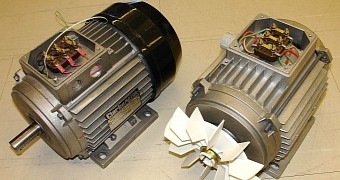We aren't totally unfamiliar with 3D printed engine parts. After all, just the other day an airplane was taken into the air by an engine with 3D printed turbine blades. Induction motors have always been held as something beyond the reach of additive manufacturing though, until now.
Additive manufacturing is the technical term for 3D printing technology. The reason why induction motors haven't been considered as candidates for such technology is because of their toughness levels.
The insides of an induction motor are made of parts which have to weather great heat and electrical stress.
This has put them outside the reach of 3D printing because they, and the materials making them, are too enduring to be processed through additive techniques.
Now, though, a method for 3D printing these induction motors has been developed by researchers at the United Technologies Corp Research Center (UTRC) and the Department of Energy. People from the Connecticut Center for Additive Manufacturing, plus researchers from the Penn State University, are helping along.
The Advanced Research Project Agency-Energy (Arpa-E)
This new program will create an induction motor that doesn't use rare-earth magnets and can be used in vehicles powered solely by electricity.
Getting the materials to work with 3D printing technology is one of the dilemmas that has to be addressed, but not the only one.
The motor will have to be redesigned as well, since 3D printing allows for some of the components to be merged into a single one, enhancing durability. Finding a way to produce actual magnets through 3D printing is the biggest step right now.
The ETA for the new motor
We won't know for sure what their blueprints are like until the first prototype is revealed next year (2015), but it's good to know something like this is in the works.
Induction motors are used in many industrial applications, thanks to them being rugged and economical, not to mention reliable. Smaller versions power the fans that keep you cool during summer, and your hardware under the red temperature zone.
Basically, forces of magnetism are exploited to get something to spin around really, really fast. This spin can be used for a variety of things, like spinning rotors or other parts inside a larger machine.
Unfortunately, we don't know when in 2015 we can expect a 3D printed induction motor to show up. Probably not in the first quarter, no matter how much we wish it.

 14 DAY TRIAL //
14 DAY TRIAL //